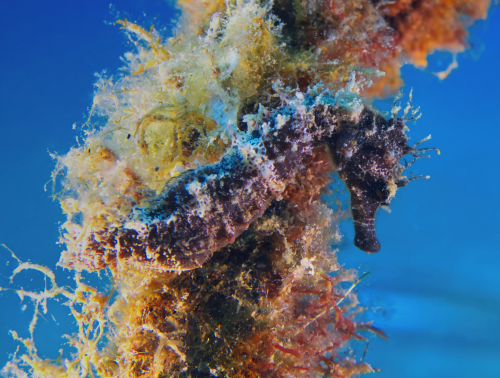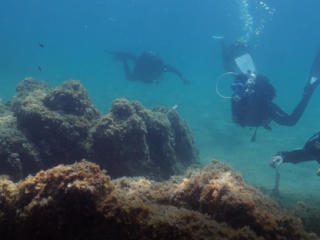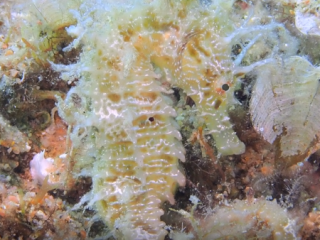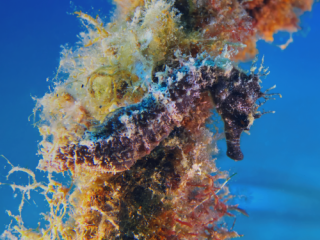And the small inhabitants of posidonia beds and sandy bottoms
At first glance, the posidonia beds and the sandy bottoms seem very homogeneous. If we just take a look around, it may seem that there isn’t much life there, as it is hidden out of sight of any possible predators.
The animals aim to go unnoticed using all kinds of strategies: burying themselves, camouflaging themselves, searching for refuges... However, if we observe it in detail we can find anything from snails to shells, sea cucumbers, fish, worms and many other species.
One of the inhabitants of the sandy-bottomed seabed and the posidonia beds that often goes unnoticed, is the sea horse, a surprising and very attractive animal for divers.

Our recommended dive: La Mar Menuda - Tossa de Mar
The Mar Menuda dive is one of the best known in the Costa Brava, its seabed slowly gains depth following the rocky formations that leave from the Mar Menuda beach and extend to the last the island of Tossa de Mar. They are mixture of rocky and sandy bottoms and in some places we can also find posidonia.
Although we categorise it as a single dive, several routes can be made from the same starting point.
The route that we propose starts from the Mar Menuda beach, next to the Banyera de Ses Dones area, with thick sandy and rocky bottoms, and which goes back towards the island passing through the Freu area, where we will have to be especially careful with regards our orientation.
It is an easy dive area protected from bad weather and suitable for all levels.
Mar Menuda is known to house a population of seahorses which the centres’ guides have usually located, and which are the emblem of the area.
In addition to the seahorses, in Tossa you will see all the inhabitants of the posidonia and fish of a thousand colours. Its seabeds with precoralligenous formations are full of invertebrates, organisms without any feet or heads and a large number of nudibranchs, as well as some small groupers in hiding, as well as on occasions, some special fish such as the John Dories and some spiny lobsters.
Remember that the seahorse and all the inhabitants of the posidonia and the sandy bottoms are very delicate organisms that must never be touched or disturbed.




